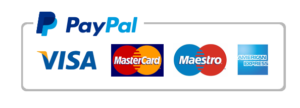Using OSHA’s Hierarchy of Controls, write one paragraph for the hazard scenario above that summarizes your approach to reducing the risks associated with the hazard. Indicate which type of hazard control you will use, and describe exactly how it will be used to control the hazard.
1. A plant that manufactures automobile chassis includes a production area containing 100 robotic welding stations. An adjacent area contains 10 welding booths where employees perform hand welding using MIG welders to rework welds that have been identified as unacceptable. Personal air sampling shows that personal exposures at 5 of the welding booths located in the middle of the rework exceed the OSHA PEL for lead, nickel, and iron oxide fumes. On average, the personal exposures exceed the applicable OSHA PEL by 2-3 times.
Using OSHA’s Hierarchy of Controls, write one paragraph for the hazard scenario above that summarizes your approach to reducing the risks associated with the hazard. Indicate which type of hazard control you will use, and describe exactly how it will be used to control the hazard.
2. Employees in the paint department of an automotive parts production facility use styrene to clean residue off the parts as they come off the paint line. The OSHA PEL for styrene is 100 ppm as an 8-hour TWA exposure. Personal air samples show that during peak production times, exposures range from 150 ppm to 200 ppm for an 8-hour shift. The parts cleaning is performed in a small room with one door.
Using OSHA’s Hierarchy of Controls, write one paragraph for the hazard scenario above that summarizes your approach to reducing the risks associated with the hazard. Indicate which type of hazard control you will use, and describe exactly how it will be used to control the hazard.
3. A plant has an operation that produces automotive headliners in a press. The process uses a compound that contains methylene bisphenyl isocyanate (MDI). The compound containing MDI must be used in the production process to meet the client’s specifications for the headliner. The OSHA PEL for MDI is 0.02 ppm as a ceiling concentration. Personal air samples collected for 15 minutes at the time when the press opens show that short-term exposures range from 0.02 ppm to 0.06 ppm.
Using OSHA’s Hierarchy of Controls, write one paragraph for the hazard scenario above that summarizes your approach to reducing the risks associated with the hazard. Indicate which type of hazard control you will use, and describe exactly how it will be used to control the hazard.
4. A press area of a plant has six 400-ton presses in operation 24 hours a day, 7 days a week. Personal monitoring using noise dosimeters has shown that 8-hour time-weighted average (TWA) exposures range from 92.0 dBA to 94.5 dBA.
Using OSHA’s Hierarchy of Controls, write a hazard scenario using the information above that summarizes your approach to reducing the risks associated with the hazard. Indicate which type of hazard control you will use, and describe exactly how it will be used to control the hazard.


